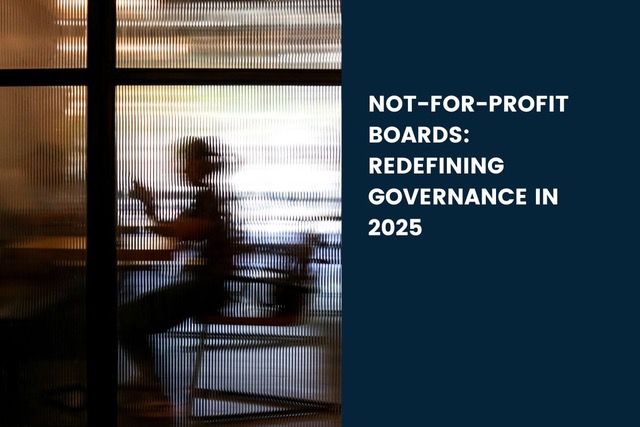Why Executive Talent Holds More Power Than Ever
1. Supply and Demand Imbalance
As industries become more complex, the need for skilled executive leadership has grown. However, the pool of leaders with the right mix of experience, strategic vision, and adaptability remains limited. Companies looking for executives with expertise in digital transformation, regulatory compliance, or crisis management often find themselves competing fiercely for a small group of qualified candidates.
In the technology sector, for example, companies are aggressively pursuing leaders with AI-driven transformation experience. Some firms, recognising the scarcity of such expertise, have begun offering equity stakes and board positions to attract top candidates. This trend is not limited to tech—industries ranging from finance to healthcare are similarly competing for executives with specialised skill sets.
2. A Shift in Executive Priorities
Today’s executives are making career decisions based on more than just financial compensation. Many are looking for roles that align with their personal values and leadership philosophies. Purpose-driven leadership, flexibility, and opportunities to drive meaningful impact are now among the top priorities for senior leaders.
A recent study found that 75% of executives would leave a high-paying role if they felt disconnected from the company’s mission and values. This trend has been particularly evident in industries undergoing significant change, such as sustainability and ESG-focused businesses. Executives are seeking out companies that are aligned with their personal beliefs and offer a clear vision for the future.
Beyond purpose, executives are also prioritising work-life balance. The shift toward hybrid and remote work has extended to leadership roles, with many executives negotiating for flexible working arrangements. Companies that insist on rigid, office-based leadership structures are struggling to attract top-tier talent.
3. The Rise of Portfolio Careers
Traditionally, executive careers followed a linear trajectory—climbing the corporate ladder within a single organisation. But today, many senior leaders are choosing portfolio careers that combine board roles, advisory positions, interim leadership, and consulting. This approach allows executives to work across multiple organisations, focusing on strategic impact rather than day-to-day operations.
For businesses, this trend presents a challenge: many of the most in-demand leaders are not looking for full-time roles. A former CEO who once led a global financial services firm may now prefer to serve on multiple boards rather than commit to a single organisation. Companies that fail to recognise this shift may struggle to secure the right leaders at the right time.
4. Increased Executive Mobility
Geographical constraints are no longer as significant as they once were. High-calibre executives are being recruited across borders, often choosing roles based on the best cultural and professional fit rather than location. This has intensified competition for leadership talent, especially for companies that operate in highly specialised industries.
A leading Australian organisation, for example, recently expanded into Asian markets and required a CEO with deep regional expertise. Instead of hiring locally, they successfully recruited a European executive with extensive experience in Asia-Pacific market expansion. This level of executive mobility means that organisations must compete on a global scale, offering compelling value propositions that go beyond salary.
How Organisations Can Win the War for Executive Talent
1. Strengthen Your Employer Brand
Executives are drawn to organisations with a strong sense of purpose, clear values, and a compelling leadership vision. Companies must invest in employer branding to differentiate themselves in a competitive market. This includes showcasing leadership values, highlighting organisational culture, and demonstrating a commitment to executive growth and development.
For example, a well-known global retailer recently revitalised its employer brand by highlighting its commitment to sustainability and ethical leadership. This move attracted executives who shared the company’s vision, reinforcing cultural alignment from the outset.
2. Offer More Than Just Compensation
Executives today are looking for meaningful engagement beyond traditional salary packages. Companies need to offer:
- Opportunities for strategic influence, such as board involvement or cross-functional leadership roles.
- Performance-based incentives tied to long-term business success.
- Clear pathways for leadership impact within the organisation.
A leading financial institution recently secured a high-profile executive by structuring an incentive package that included a direct role in shaping the company’s innovation strategy—demonstrating that influence and strategic impact can be just as valuable as financial incentives.
3. Prioritise Succession Planning and Leadership Development
A strong internal pipeline of future leaders reduces reliance on external hiring and ensures long-term leadership stability. Companies that invest in succession planning and leadership development programs are better positioned to retain high-potential executives.
One multinational corporation significantly reduced leadership turnover by identifying and mentoring emerging leaders within the company, allowing for seamless transitions when senior positions opened up.
4. Proactively Engage Executive Talent
The best time to engage executive talent isn’t when you have an urgent vacancy—it’s long before you need them. Organisations that build relationships with top leaders ahead of time have a competitive advantage.
Companies that work closely with executive search firms and maintain an active leadership talent pipeline are far more successful in securing top executives when leadership needs arise.
Frequently Asked Questions (FAQs) About Executive Talent
1. What are executives looking for in new roles today?
Executives are increasingly prioritising purpose-driven work, cultural alignment, and the ability to drive meaningful impact within an organisation. While competitive compensation remains important, other key factors include:
- Autonomy and influence – Senior leaders want a seat at the table where they can shape strategy.
- Work-life balance and flexibility – Many executives expect hybrid or remote working options.
- Organisational values – Companies with a clear mission and commitment to ESG (Environmental, Social, and Governance) factors are highly attractive.
- Professional growth – Opportunities to learn, evolve, and be challenged within a dynamic environment.
Companies that fail to address these factors risk losing top leadership talent to competitors offering a more holistic executive value proposition.
2. How can companies differentiate themselves to attract top executive talent?
To stand out in a competitive talent market, organisations must offer more than just an attractive salary package. The most successful companies focus on:
- Employer branding – Clearly communicating their vision, leadership culture, and values.
- Equity and long-term incentives – Offering stock options or performance-based incentives that align with long-term growth.
- Structured leadership development programs – Demonstrating investment in ongoing professional growth.
- Executive engagement in strategic decision-making – Providing meaningful roles that give leaders the power to influence long-term business strategy.
- Well-defined succession planning – Showing a clear roadmap for career progression within the organisation.
Companies that position themselves as leadership destinations rather than just employers gain a significant advantage in attracting top executive talent.
3. Why is executive retention becoming more challenging?
Retaining senior leaders has become increasingly difficult due to:
- The rise of portfolio careers – Many executives are opting for advisory roles, consulting, or board positions instead of committing to a single employer.
- Shifting work expectations – Executives expect more work-life balance and flexibility.
- Increased recruitment competition – Other companies are constantly trying to poach high-performing executives.
- Lack of cultural alignment – Leaders who feel disconnected from a company’s mission are more likely to leave within their first year.
To improve retention, organisations must create an environment where executives feel valued, supported, and empowered to succeed. This includes providing clear growth opportunities, fostering leadership engagement, and offering competitive benefits beyond salary alone.
4. How can organisations future-proof their executive recruitment strategies?
To ensure long-term access to top leadership talent, organisations should:
- Develop a strong succession planning framework – Identify and nurture future leaders within the company.
- Engage in proactive networking – Build relationships with high-potential executives long before a vacancy arises.
- Create a talent pipeline – Work with executive search firms to maintain a roster of pre-qualified leadership candidates.
- Leverage data-driven hiring – Use market insights and leadership assessments to identify candidates who fit both the cultural and strategic needs of the business.
- Strengthen onboarding and integration processes – Ensuring that executives have the right support during their transition significantly reduces failure rates.
By treating executive hiring as an ongoing strategic initiative rather than a reactive process, companies can stay ahead of the competition.
5. What role do executive search firms play in securing top leadership talent?
Executive search firms provide organisations with access to an exclusive network of high-performing leaders and bring deep industry expertise to the hiring process. Their role includes:
- Identifying top-tier candidates – Sourcing executives who may not be actively looking for new roles but are the right fit for the organisation.
- Conducting market mapping – Analysing competitor hiring trends and talent availability to find the best candidates.
- Assessing leadership fit – Evaluating candidates not only on skills and experience but also cultural alignment and strategic mindset.
- Managing confidential searches – Ensuring discretion in sensitive leadership transitions.
- Providing post-placement support – Helping executives integrate successfully into their new roles to improve retention rates.
Partnering with an executive search firm saves organisations time and reduces hiring risks, ensuring they secure the best leadership talent for long-term success.
6. How can businesses balance hiring external executive talent with internal promotions?
Finding the right balance between internal promotions and external executive recruitment is crucial for leadership success. Companies should:
- Develop high-potential employees – Investing in leadership development programs ensures a strong pipeline of internal candidates.
- Consider external hires for transformational roles – Bringing in fresh perspectives is often necessary for major strategic shifts or cultural changes.
- Assess leadership gaps objectively – Using skills assessments and market comparisons to determine when external expertise is needed.
- Blend both approaches – A combination of internal growth and external recruitment provides stability while introducing innovative leadership perspectives.
Companies that integrate internal talent development with strategic external hiring build resilient leadership teams equipped for future challenges.
7. What are the biggest hiring mistakes companies make when recruiting executives?
Some of the most common executive hiring mistakes include:
- Overemphasising industry experience over leadership ability – Focusing solely on a candidate’s past roles instead of assessing their capacity to lead in a new environment.
- Rushing the hiring process – Filling a position too quickly without proper due diligence can lead to misalignment.
- Ignoring cultural fit – A highly skilled executive who doesn’t align with company values can cause long-term disruption.
- Failing to conduct a structured onboarding process – Even the best leaders struggle if they are not properly integrated into the organisation.
- Not leveraging external expertise – Companies that try to manage executive searches internally often miss out on top talent.
Avoiding these mistakes ensures that businesses hire executives who drive sustainable success rather than short-term fixes.
8. How does company culture impact executive hiring and retention?
A company’s culture plays a critical role in attracting and retaining executive talent. Leaders are increasingly prioritising cultural alignment when evaluating new opportunities. Key factors include:
- Leadership values – Executives want to work for organisations that align with their personal leadership philosophy.
- Decision-making autonomy – Leaders are more likely to stay if they feel empowered to drive meaningful change.
- Workplace flexibility – Even senior leaders value hybrid or remote working options.
- Diversity and inclusion – Companies with strong DEI (Diversity, Equity, and Inclusion) initiatives are more attractive to top-tier talent.
A toxic or misaligned culture is one of the top reasons executives leave within the first year. Companies that foster a positive leadership environment gain a competitive edge in both recruitment and retention.
9. How can organisations measure the success of their executive hiring strategy?
The success of executive hiring goes beyond just filling a role—it’s about long-term business impact. Organisations should track:
- Executive retention rates – How long do new leaders stay, and are they thriving?
- Business performance metrics – Have the leader’s initiatives contributed to growth, efficiency, or innovation?
- Employee engagement and turnover – Has leadership strengthened or weakened company culture?
- Stakeholder satisfaction – Do board members, investors, and employees trust and support the new executive?
Regularly assessing these metrics ensures that executive hiring delivers tangible value to the business.
The war for executive talent is more competitive than ever, and top leaders now hold significant power in shaping their careers. Organisations must move beyond traditional hiring practices and focus on long-term leadership development, strategic talent engagement, and employer branding to attract and retain the best executives.
At Galvin-Rowley Executive, we help businesses secure high-impact leaders who align with their strategic goals and culture. Let’s start the conversation today.




